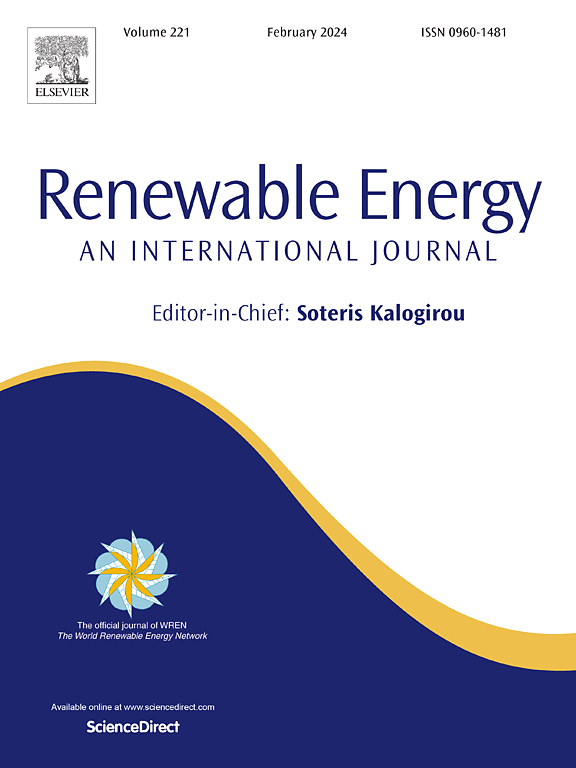优化内置烟囱通风:地下管廊预冷与PV/T后热的协同效应
IF 9
1区 工程技术
Q1 ENERGY & FUELS
引用次数: 0
摘要
浮力驱动的自然通风节能且稳定,适用于风力有限或城市密度高的地区。然而,它的有效性依赖于由空气入口和出口之间的温度或高度差异驱动的浮力。当浮力减弱时,通风效率降低,可能出现反气流。为了解决这个问题,本研究提出了一种优化策略来增强浮力驱动通风。室外空气通过地下管道廊冷却,扩大自然通风的有效温度范围。内置烟囱的内壁使用屋顶光伏/热(PV/T)系统加热,以提高排气温度并增强浮力。结果表明,供气可预冷至13.1℃。在40°C和45°C下加热后,排气温度分别升高2.1°C和3.0°C,反向气流持续时间分别减少35.9%和75.6%。当采用屋顶PV/T系统作为热源时,其提供的平均热温度为44.3°C,导致气流增加102.5%,有效通风时间延长16.6%。这些发现证明了将可再生能源整合到被动通风系统中的可行方法,特别是在低风或高密度环境中。本文章由计算机程序翻译,如有差异,请以英文原文为准。
Optimizing built-in chimney ventilation: Synergetic effects of underground pipe gallery pre-cooling and PV/T post-heating
Buoyancy-driven natural ventilation is energy-efficient and stable, making it suitable for areas with limited wind or high urban density. However, its effectiveness relies on buoyancy forces driven by temperature or height differences between the air inlet and outlet. When buoyancy is weakened, ventilation efficiency decreases, and reverse airflow may occur. To address this, this study proposes an optimization strategy to enhance buoyancy-driven ventilation. Outdoor air is cooled through an underground pipe gallery to expand the effective temperature range for natural ventilation. The inner wall of a built-in chimney is heated using a rooftop photovoltaic/thermal (PV/T) system to raise exhaust temperature and enhance buoyancy forces. The results showed that supply air could be pre-cooled by up to 13.1 °C. Post-heating at 40 °C and 45 °C, the exhaust temperatures increased by 2.1 °C and 3.0 °C, respectively, and reduced reverse airflow duration by 35.9 % and 75.6 %. When the rooftop PV/T system was used as the heat source, it provided an average heat temperature of 44.3 °C, resulting in a 102.5 % increase in airflow and a 16.6 % extension in effective ventilation time. These findings demonstrate a feasible approach for integrating renewable energy into passive ventilation systems, particularly in low-wind or high-density environments.
求助全文
通过发布文献求助,成功后即可免费获取论文全文。
去求助
来源期刊

Renewable Energy
工程技术-能源与燃料
CiteScore
18.40
自引率
9.20%
发文量
1955
审稿时长
6.6 months
期刊介绍:
Renewable Energy journal is dedicated to advancing knowledge and disseminating insights on various topics and technologies within renewable energy systems and components. Our mission is to support researchers, engineers, economists, manufacturers, NGOs, associations, and societies in staying updated on new developments in their respective fields and applying alternative energy solutions to current practices.
As an international, multidisciplinary journal in renewable energy engineering and research, we strive to be a premier peer-reviewed platform and a trusted source of original research and reviews in the field of renewable energy. Join us in our endeavor to drive innovation and progress in sustainable energy solutions.
 求助内容:
求助内容: 应助结果提醒方式:
应助结果提醒方式:


